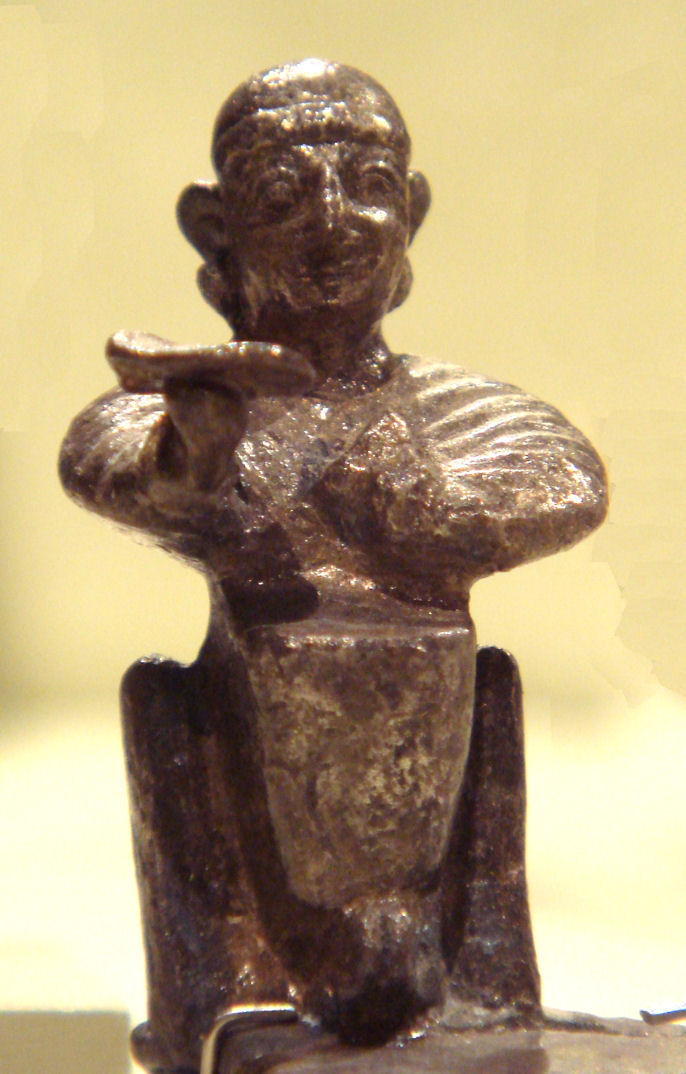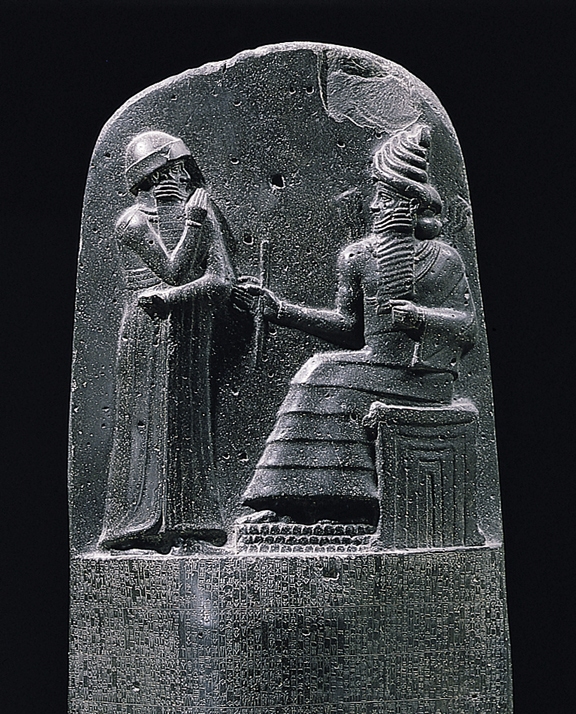|
Sandas
Sandas (more commonly spelt as "Sandan") was the Anatolian ( Hittite) lion god during the Classical period. He used to be represented in association with a horned lion, and often resided inside a pyre surmounted by an eagle. Sandan was often associated to the Greek god Herakles, and sometimes to Marduk. In ceremonies, an image of the god was placed inside a pyre and was set on fire. Sandan appears in the coins of the Seleucids, as well as on other coins of Tarsus (Cilicia) during the time of the Roman emperors. In Tarsus, Sandon (sometimes spelled Sandes, Sandan, or Sanda) was visually represented as a mitre-wearing human form carrying a sword, a flower, or (commonly) an axe who stands on the back of a horned and winged lion. Associated primarily with war and weather, Sandon was the chief god in the Cilician pantheon from at least the beginning of the second millennium BC. The ancient Greeks and Romans equated Sandon with Herakles Heracles ( ; grc-gre, Ἡρακλῆς ... [...More Info...] [...Related Items...] OR: [Wikipedia] [Google] [Baidu] |
Hittite Deities
Hittite mythology and Hittite religion were the religious beliefs and practices of the Hittites, who created an empire centered in what is now Turkey from . Most of the narratives embodying Hittite mythology are lost, and the elements that would give a balanced view of Hittite religion are lacking among the tablets recovered at the Hittite capital Hattusa and other Hittite sites. Thus, "there are no canonical scriptures, no theological disquisitions or discourses, no aids to private devotion". Some religious documents formed part of the corpus with which young scribes were trained, and have survived, most of them dating from the last several decades before the final burning of the sites. The scribes in the royal administration, some of whose archives survive, were a bureaucracy, organizing and maintaining royal responsibilities in areas that would be considered part of religion today: temple organization, cultic administration, reports of diviners, make up the main body of sur ... [...More Info...] [...Related Items...] OR: [Wikipedia] [Google] [Baidu] |
Hittites
The Hittites () were an Anatolian people who played an important role in establishing first a kingdom in Kussara (before 1750 BC), then the Kanesh or Nesha kingdom (c. 1750–1650 BC), and next an empire centered on Hattusa in north-central Anatolia (around 1650 BC). This empire reached its height during the mid-14th century BC under Šuppiluliuma I, when it encompassed an area that included most of Anatolia as well as parts of the northern Levant and Upper Mesopotamia. Between the 15th and 13th centuries BC, the Empire of Hattusa—in modern times conventionally called the Hittite Empire—came into conflict with the New Kingdom of Egypt, the Middle Assyrian Empire and the empire of Mitanni for control of the Near East. The Middle Assyrian Empire eventually emerged as the dominant power and annexed much of the Hittite Empire, while the remainder was sacked by Phrygian newcomers to the region. After BC, during the Late Bronze Age collapse, the Hittites splintered in ... [...More Info...] [...Related Items...] OR: [Wikipedia] [Google] [Baidu] |
Herakles
Heracles ( ; grc-gre, Ἡρακλῆς, , glory/fame of Hera), born Alcaeus (, ''Alkaios'') or Alcides (, ''Alkeidēs''), was a divine hero in Greek mythology, the son of Zeus and Alcmene, and the foster son of Amphitryon.By his adoptive descent through Amphitryon, Heracles receives the epithet Alcides, as "of the line of Alcaeus", father of Amphitryon. Amphitryon's own, mortal son was Iphicles. He was a great-grandson and half-brother (as they are both sired by the god Zeus) of Perseus, and similarly a half-brother of Dionysus. He was the greatest of the Greek heroes, the ancestor of royal clans who claimed to be Heracleidae (), and a champion of the Olympian order against chthonic monsters. In Rome and the modern West, he is known as Hercules, with whom the later Roman emperors, in particular Commodus and Maximian, often identified themselves. The Romans adopted the Greek version of his life and works essentially unchanged, but added anecdotal detail of their own, some ... [...More Info...] [...Related Items...] OR: [Wikipedia] [Google] [Baidu] |
Marduk
Marduk (Cuneiform: dAMAR.UTU; Sumerian: ''amar utu.k'' "calf of the sun; solar calf"; ) was a god from ancient Mesopotamia and patron deity of the city of Babylon. When Babylon became the political center of the Euphrates valley in the time of Hammurabi (18th century BC), Marduk slowly started to rise to the position of the head of the Babylonian pantheon, a position he fully acquired by the second half of the second millennium BCE. In the city of Babylon, Marduk was worshipped in the temple Esagila. Marduk is associated with the divine weapon Imhullu. His symbolic animal and servant, whom Marduk once vanquished, is the dragon Mušḫuššu. "Marduk" is the Babylonian form of his name. The name ''Marduk'' was probably pronounced ''Marutuk''. The etymology of the name ''Marduk'' is conjectured as derived from ''amar-Utu'' ("immortal son of Utu" or "bull calf of the sun god Utu"). The origin of Marduk's name may reflect an earlier genealogy, or have had cultural ties to the anc ... [...More Info...] [...Related Items...] OR: [Wikipedia] [Google] [Baidu] |
Tarsus, Mersin
Tarsus (Hittite language, Hittite: 𒋫𒅈𒊭 ; grc, Ταρσός, label=Ancient Greek, Greek ; xcl, Տարսոն, label=Old Armenian, Armenian ; ar, طَرسُوس ) is a historic city in south-central Turkey, inland from the Mediterranean Sea, Mediterranean. It is part of the Adana-Mersin metropolitan area, the fourth-largest metropolitan area in Turkey with a population of 3 million people. Tarsus forms an administrative district in the eastern part of Mersin Province, Mersin province and lies at the heart of the region. With a history going back over 6,000 years, Tarsus has long been an important stop for traders and a focal point of many civilisations. During the Roman Empire, it was the capital of the province of Cilicia (Roman province), Cilicia. It was the scene of the first meeting between Mark Antony and Cleopatra, and the birthplace of Paul the Apostle, St Paul the Apostle. Tarsus is home to one of Turkey's most famous high schools, the Tarsus American College ... [...More Info...] [...Related Items...] OR: [Wikipedia] [Google] [Baidu] |
Cilicia
Cilicia (); el, Κιλικία, ''Kilikía''; Middle Persian: ''klkyʾy'' (''Klikiyā''); Parthian: ''kylkyʾ'' (''Kilikiyā''); tr, Kilikya). is a geographical region in southern Anatolia in Turkey, extending inland from the northeastern coasts of the Mediterranean Sea. Cilicia has a population ranging over six million, concentrated mostly at the Cilicia plain. The region includes the provinces of Mersin, Adana, Osmaniye, along with parts of Hatay and Antalya. Geography Cilicia is extended along the Mediterranean coast east from Pamphylia to the Nur Mountains, which separates it from Syria. North and east of Cilicia lie the rugged Taurus Mountains that separate it from the high central plateau of Anatolia, which are pierced by a narrow gorge called in antiquity the Cilician Gates. Ancient Cilicia was naturally divided into Cilicia Trachea and Cilicia Pedias by the Limonlu River. Salamis, the city on the east coast of Cyprus, was included in its administrative jurisdiction. T ... [...More Info...] [...Related Items...] OR: [Wikipedia] [Google] [Baidu] |
Pantheon (gods)
A pantheon is the particular set of all gods of any individual polytheistic religion, mythology, or tradition. Significance The word, ''pantheon'' derives from Greek πάνθεον ''pantheon'', literally "(a temple) of all gods", "of or common to all gods" from πᾶν ''pan-'' "all" and θεός ''theos'' "god". A pantheon of gods is a common element of polytheistic societies, and the nature of a society's pantheon can be considered a reflection of that society: Some well-known historical polytheistic pantheons include the Sumerian gods and the Egyptian gods, and the classical-attested pantheon which includes the ancient Greek religion and Roman religion. Post-classical polytheistic religions include Norse Æsir and Vanir, the Yoruba Orisha, the Aztec gods, and many others. Today, most historical polytheistic religions are referred to as "mythology". Evolution of pantheons Scholars such as Jaan Puhvel, J. P. Mallory, and Douglas Q. Adams have reconstructed aspect ... [...More Info...] [...Related Items...] OR: [Wikipedia] [Google] [Baidu] |
Antiochus X Eusebes
Antiochus X Eusebes Philopator ( grc, Ἀντίοχος Εὐσεβής Φιλοπάτωρ; – 92 or 88 BC) was a Seleucid monarch who reigned as King of Syria during the Hellenistic period between 95 BC and 92 BC or 89/88 BC (224 SE eleucid year. He was the son of Antiochus IX and perhaps his Egyptian wife Cleopatra IV. Eusebes lived during a period of general disintegration in Seleucid Syria, characterized by civil wars, foreign interference by Ptolemaic Egypt and incursions by the Parthians. Antiochus IX was killed in 95BC at the hands of Seleucus VI, the son of his half-brother and rival Antiochus VIII. Antiochus X then went to the city of Aradus where he declared himself king. He avenged his father by defeating Seleucus VI, who was eventually killed. Antiochus X did not enjoy a stable reign as he had to face three of Seleucus VI's brothers, Antiochus XI, Philip I and Demetrius III. Antiochus XI defeated AntiochusX and expelled him from the capital Antioch i ... [...More Info...] [...Related Items...] OR: [Wikipedia] [Google] [Baidu] |
Lion Of Venice
The Lion of Venice is an ancient bronze sculpture of a winged lion in the Piazza San Marco of Venice, Italy, which came to symbolize the city – as well as one of its patron saints, St Mark – after its arrival there in the 12th century. The sculpture surmounts one of two large granite columns in the Square, thought to have been erected between 1172 and 1177 during the reign of Doge Sebastiano Ziani or about 1268, bearing ancient symbols of the two patron saints of Venice. The ''Lion'' sculpture has had a very long and obscure history, probably starting its existence as a winged lion-griffin statue on a monument to the god Sandon at Tarsus in Cilicia about 300 BC. The figure, which stands on the eastern column, at some point came to represent the Lion of Saint Mark, traditional symbol of Saint Mark the evangelist. The figure standing on the western column is St. Theodore of Amasea, patron of the city before St Mark, who holds a spear and stands on a crocodile (to r ... [...More Info...] [...Related Items...] OR: [Wikipedia] [Google] [Baidu] |
Lion Deities
The lion (''Panthera leo'') is a large cat of the genus ''Panthera'' native to Africa and India. It has a muscular, broad-chested body; short, rounded head; round ears; and a hairy tuft at the end of its tail. It is sexually dimorphic; adult male lions are larger than females and have a prominent mane. It is a social species, forming groups called ''prides''. A lion's pride consists of a few adult males, related females, and cubs. Groups of female lions usually hunt together, preying mostly on large ungulates. The lion is an apex and keystone predator; although some lions scavenge when opportunities occur and have been known to hunt humans, lions typically don't actively seek out and prey on humans. The lion inhabits grasslands, savannas and shrublands. It is usually more diurnal than other wild cats, but when persecuted, it adapts to being active at night and at twilight. During the Neolithic period, the lion ranged throughout Africa and Eurasia from Southeast Europe to In ... [...More Info...] [...Related Items...] OR: [Wikipedia] [Google] [Baidu] |




.jpg)



